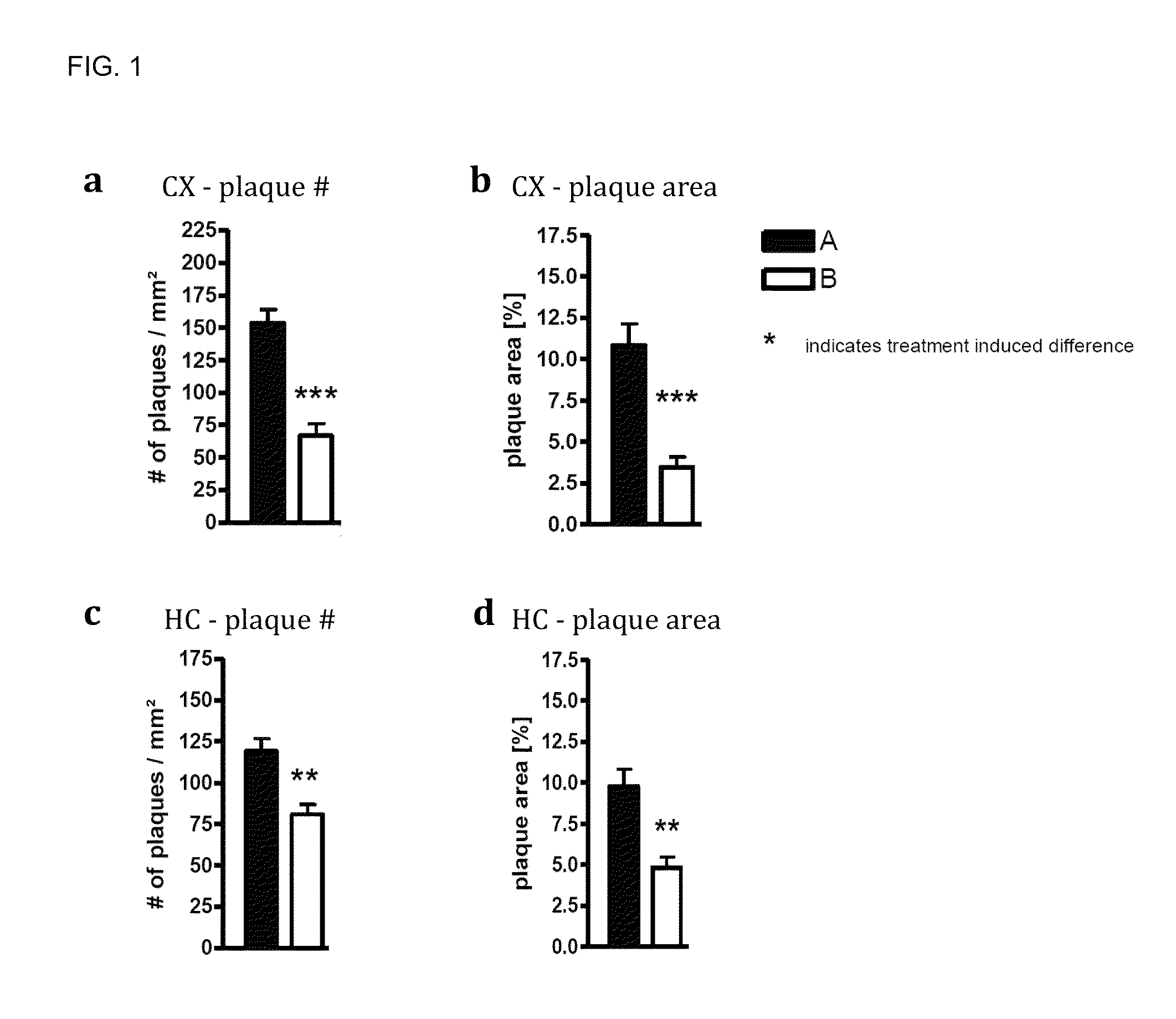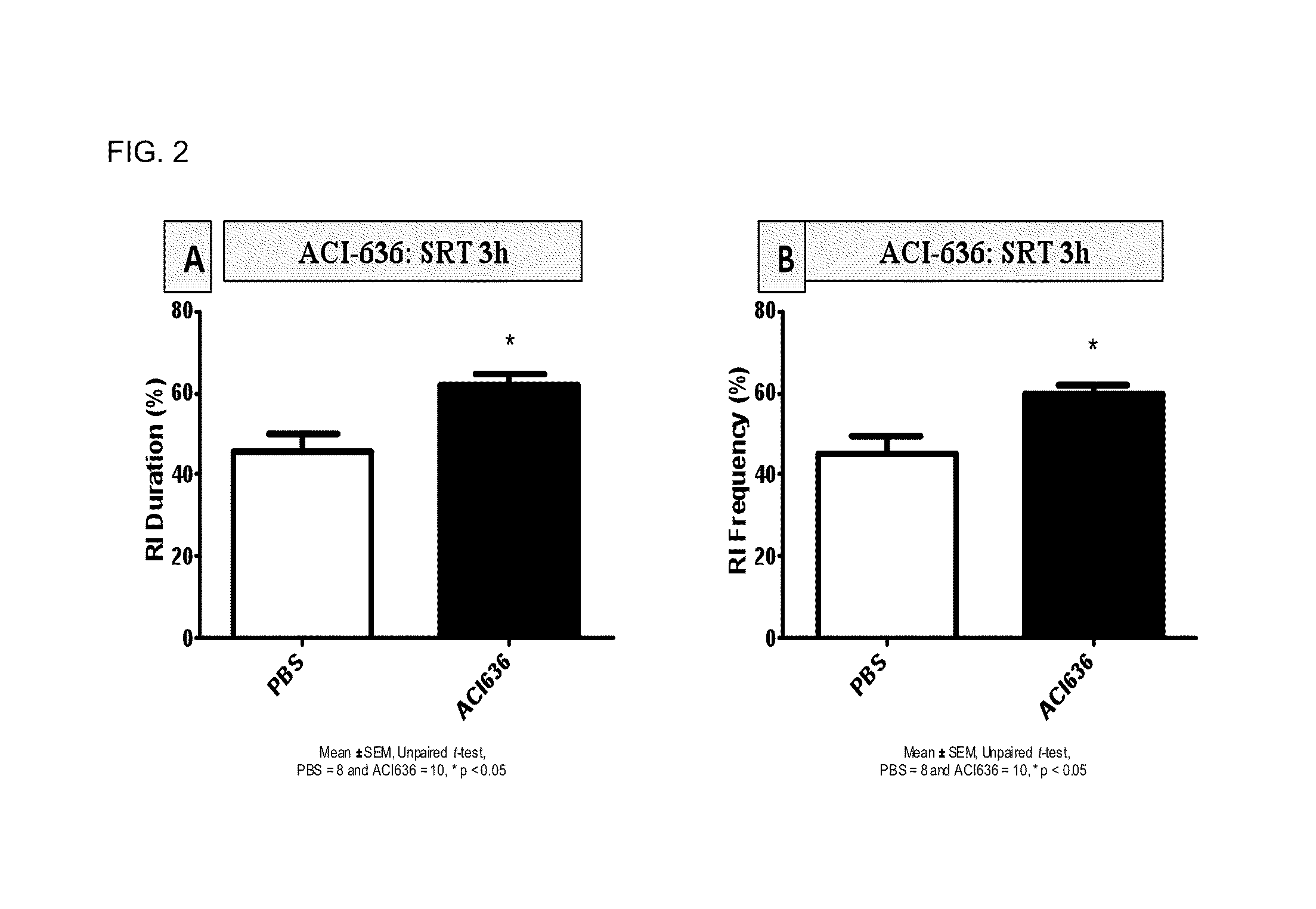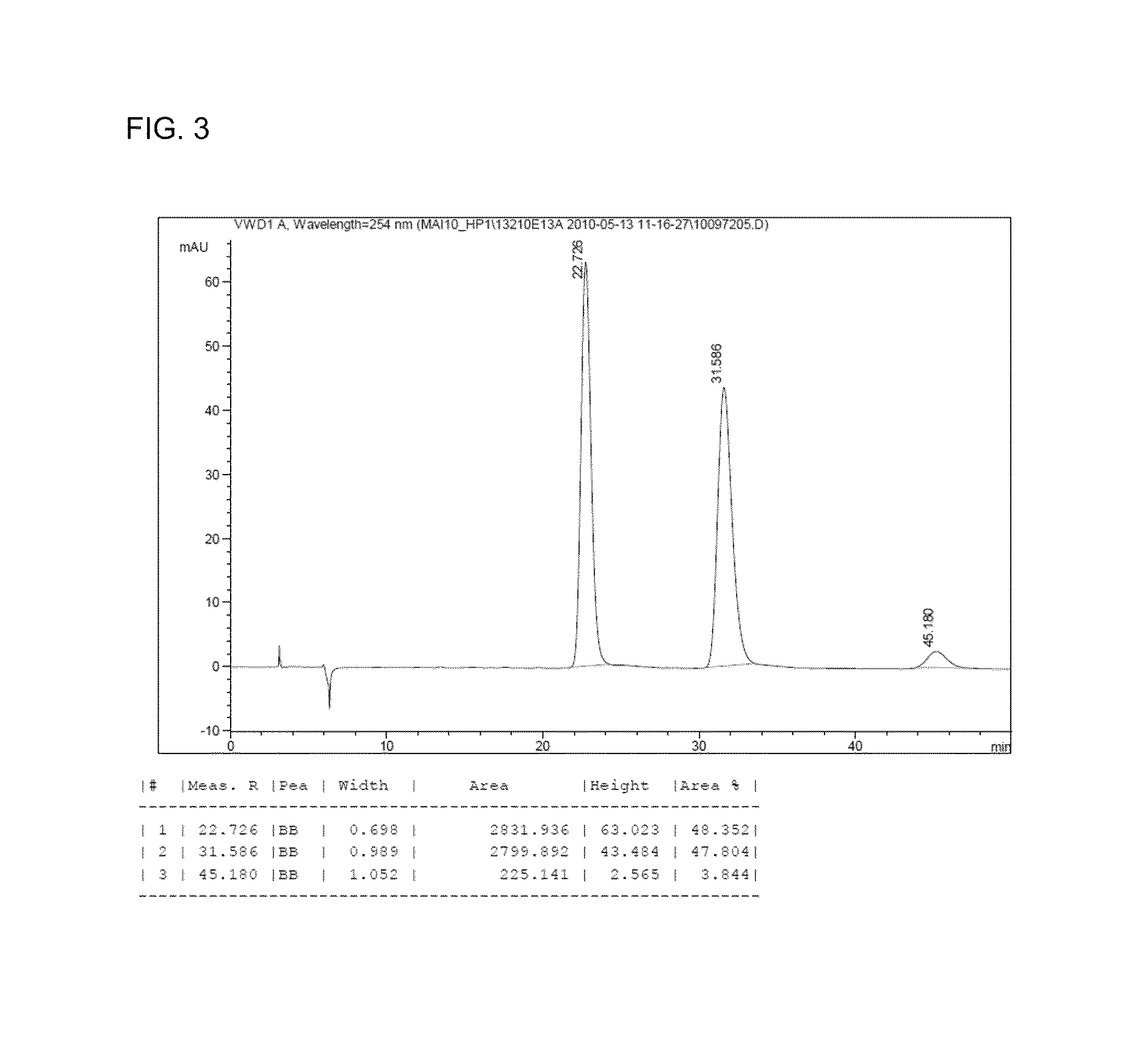Compounds for the treatment of diseases associated with amyloid or amyloid-like proteins
a technology of compounds, which is applied in the field of compounds for the treatment of diseases associated with amyloid or amyloidlike proteins, can solve the problems of not being able to solve simple math problems, forgetting recent events, activities, and the names of familiar people or things, and reducing so as to retard the increase of amyloid load, reduce the load of amyloid plaques, and inhibit the formation of amyloid plaqu
- Summary
- Abstract
- Description
- Claims
- Application Information
AI Technical Summary
Benefits of technology
Problems solved by technology
Method used
Image
Examples
example 2
Preparative Example 2
[0446]
Step A
[0447]The title compound from Preparative Example 1 Step D (0.045 g, 0.127 mmol) and commercially available 2-(aminomethyl)-pyridine (0.015 g, 0.127 mmol) were dissolved in toluene (2 mL) and treated with 2,2-bis-(diphenylphosphino)-1,1-naphthalene (0.016 g, 0.025 mmol) and sodium tert-butylate (0.031 g, 0.33 mmol). The reaction mixture was then degassed by bubbling argon through the reaction mixture followed by the addition of tris(dibenzylideneacetone)dipalladium chloroform complex (0.011 g, 0.0126 mmol). The reaction vessel was sealed and the mixture was heated at ˜115° C. in a sand bath for 45 minutes. The reaction mixture was diluted with ethyl acetate (20 mL), saturated sodium bicarbonate (5 mL) and brine (5 mL). The organic phase was separated, dried over Na2SO4, filtered and the solvents were removed. The residue was purified by chromatography on silica using ethyl acetate / n-heptane (20 / 80) to elute less polar by-products, followed by ethyl a...
example 3
Preparative Example 3
[0449]
Step A
[0450]To a solution of commercially available 7-azaindole (5 g, 42.3 mmol) in diethyl ether (350 mL) was added m-chloro perbenzoic acid (11 g, 63.4 mmol) in portions at room temperature. The reaction mixture was stirred at room temperature for 5 h. The precipitated product was filtered off and washed with diethyl ether (50 mL). The solid was collected and dissolved in a mixture of water / acetone (50 mL / 10 mL) with heating. The mixture was cooled to 5° C. and the crystallized product was filtered and air dried to afford the title compound (11.7 g, 96%).
[0451]1H-NMR (400 MHz, CDCl3): δ=6.59 (d, 1H), 7.07 (dd, 1H), 7.46 (d, 1H), 7.66 (d, 1H), 8.14 (d, 1H), 12.4 (s, 1H).
Step B
[0452]To a suspension of the title compound from Step A above (2 g, 6.92 mmol) in dry acetonitrile (15 mL) was added dimethylsulfate (0.885 g, 6.92 mmol). The reaction mixture was heated at 70° C. for 8 h. Then the clear solution was cooled to room temperature. The solution was distr...
example 4
Preparative Example 4
[0454]
Step A
[0455]To a solution of commercially available 3-cyano-7-azaindole (2 g, 13.9 mmol) in tetrahydrofurane (150 mL) was added m-chloro perbenzoic acid. The reaction mixture was stirred at room temperature for 16 h. The precipitate was filtered off and dried to afford the title compound (1.89 g, 86%).
[0456]1H-NMR (400 MHz, DMSO-d6): δ=7.26 (d, 1H), 7.74 (d, 1H), 8.30 (d, 1H), 8.40 (s, 1H)
Step B
[0457]A suspension of the title compound from Step A above (1.89 g, 11.8 mmol) in dry acetonitrile (15 mL) was added dimethylsulfate (1.5 g, 11.8 mmol) and the reaction mixture was heated at 80° C. overnight. The clear solution was cooled to room temperature and transferred into three 5 mL tubes. Then a 7 M solution of ammonia in methanol (5 mL) was added to each tube. The sealed tubes were heated at 70° C. for 48 h. The reaction mixture was concentrated under reduced pressure and the residue was crystallized from ethyl acetate and n-heptane to afford the title comp...
PUM
| Property | Measurement | Unit |
|---|---|---|
| intraocular pressure | aaaaa | aaaaa |
| body weight | aaaaa | aaaaa |
| body weight | aaaaa | aaaaa |
Abstract
Description
Claims
Application Information
 Login to view more
Login to view more - R&D Engineer
- R&D Manager
- IP Professional
- Industry Leading Data Capabilities
- Powerful AI technology
- Patent DNA Extraction
Browse by: Latest US Patents, China's latest patents, Technical Efficacy Thesaurus, Application Domain, Technology Topic.
© 2024 PatSnap. All rights reserved.Legal|Privacy policy|Modern Slavery Act Transparency Statement|Sitemap



